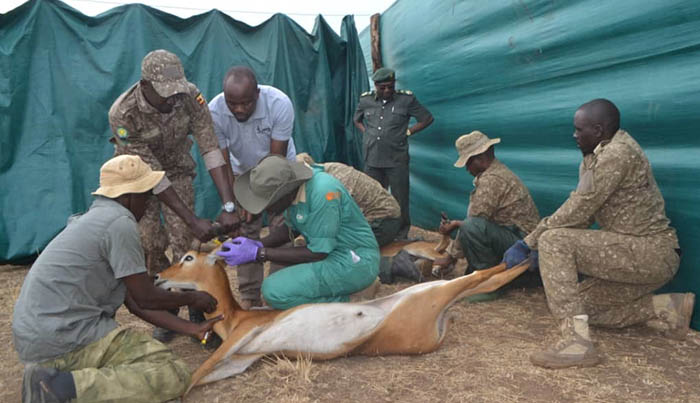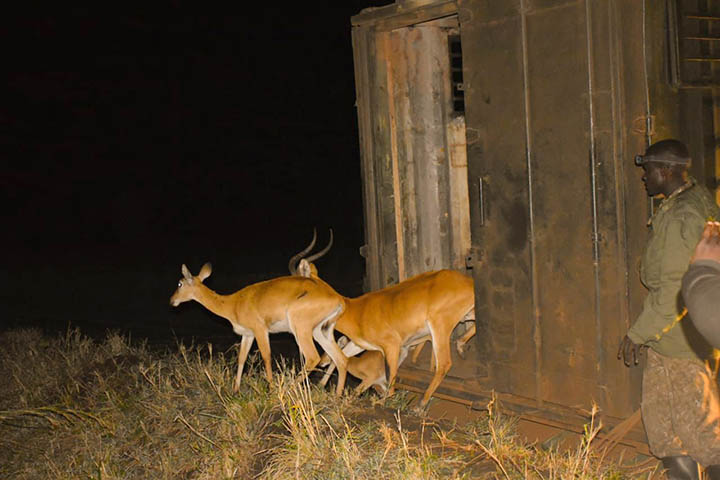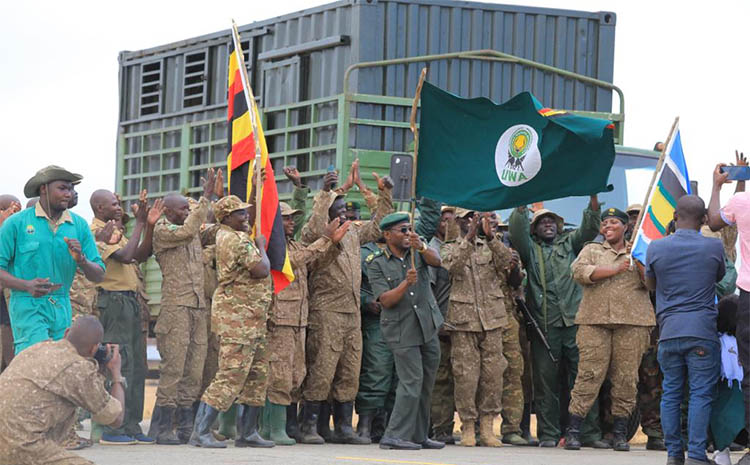On March 16, officials from the Uganda Wildlife Association (UWA) captured 30 kobs at the Kabwoya Wildlife Reserve in western Uganda, loaded them on a truck and transported them to the Kidepo Valley National Park, located in the north eastern part of the country.
The capture team included UWA veterinaries, park rangers and wardens. A media team of 20 journalists from radio, television, print and online witnessed the exercise. After capture the 30 kobs were trans-located to their new home in Kidepo, more than 480km away from Kabwoya.
UWA officials said 200 kobs will be transported to Kidepo by end this translocation exercise.
The main aim of the kobs translocation is to save Kidepo’s declining predators’ population. The Kobs will become easy prey for the predators in the expansive remote north eastern conservation area.
The predators, which include lions, cheetahs and leopards, are top tourist attractions to the park. Lions are the most affected. Latest estimates show the number of lions in Kidepo has dropped to more than half from 132 individuals three years ago.
Currently, the number of lions is estimated between 15 and 30, according to David Okiring, the assistant warden in-charge of tourism at Kidepo Valley National Park
The cheetah population is also estimated in the same range. Okiring said the cheetahs’ estimate is based on sightings because the park authority has not yet carried a comprehensive survey in recent years.

UWA’s the first major step towards restoring the lions’ population by trans-locating kobs from Kabwoya Wildlife Reserve on the shores of Lake Albert to Kidepo. The kobs will come handy as easy prey for the lions compared to the buffaloes.
Before the start of last week’s translocation from Kabwoya, the population of kobs in Kidepo was estimated at a mere 350. Officials are optimistic the addition of 200 kobs will help quickly grow the numbers and ease hunting for the predators. Kobs multiply very fast.
An estimated 8,000 buffaloes roam the Kidepo area, which includes the community land and the park’s expansive conversation valleys. But the buffaloes are not easy prey for the lions and cheetahs.
“This translocation will help keep the lions with food because they will automatically eat the kobs, of course, they will be getting the weak ones. It becomes easier for the lions to hunt kobs than buffaloes because buffaloes resist and always injure them [lions] and we have already had those scenarios several times,” Okiring explained.
He added: “So, the option of boasting up the prey population in Kidepo is very crucial because we shall have a healthy population of not only the lions and cheetahs but also the leopards which also feed on the same kobs. I think with this [kobs translocation] we shall restore a healthy population of lions in the next few years.”
On the other hand, the translocation of kobs is an advantage to Kabwoya reserve where overgrazing is already affecting the wildlife there. According to official figures, the number of kobs grew from 10 in 1996 to 8,000 last year.
The reserve is located in the Kaiso-Tonya area in the Albertine region where officials anticipate the ongoing oil exploration activities could have adverse impact on the animals.
The exercise to capture and transport the kobs over the 485-kilometre journey from Kabwoya to Kidepo was like an action movie.
“It’s going to be an intense exercise; so, sit properly and make sure your firm in positions on the vehicles, Dr Patrick Atimnedi, UWA’s senior manager veterinary services, cautioned the journalists before the kobs capture exercise started on March 16.
CAPTURE EXERCISE
A capture team spotted a group of kobs (between 50 and 60) returning from watering on the shores of Lake Albert and laid the ambush.
Once the kobs entered the ambush, they were cornered by five high-speed UWA pickup cars and chased into bomas where they got trapped in a parked loading track at the end. Some of the kobs that tried to escape back landed in the hands of waiting rangers who wrested them to ground. In the ensuing drama journalists scampered; some for safety while others captured the moments on camera.

The whole exercise last about an hour in which 31 kobs were captured. Once the kobs were loaded on the transportation track, the non-stop journey to Kidepo was flagged off.
For the media team, this trip was a test of endurance as they spent much of the 48 hours on the road between March 15 and March 17. The toughest day was March 16 when the coaster minibus in which the journalists travelled did not keep up pace with the convey transporting the kobs from Kabwoya to Kidepo.
This meant most journalists (save for the three who jumped on UWA’s escort pickups) missed the release of the kobs into the Kidepo wilderness. Despite enduring the long journey (which included 164 kilometres on the bumpy murram stretch from Kitgum), the coaster carrying the media team reached Kidepo past midnight!

